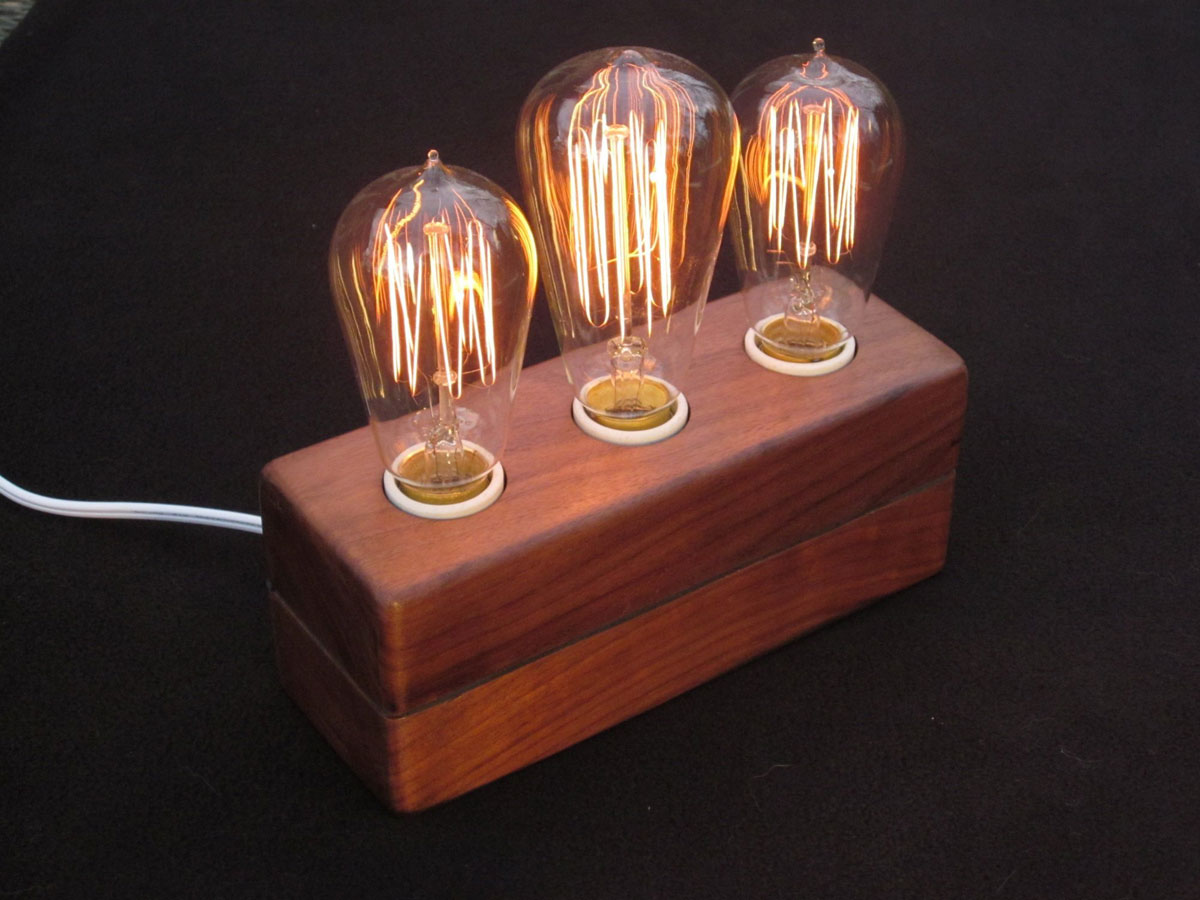This project first appeared in MAKE Volume 38, on page 88.
Have you noticed a growing plethora of vintage light bulb copies hanging in restaurants and other hip venues? Let’s add to that nostalgic glow this table lamp, that’s dimmable from a warm mood light to a very bright reading lamp.
It’s made mostly of wood. I like walnut, and happened to have a couple chunks, but any attractive hardwood will do. Electrical supply houses have the sockets and dimmer switch, and bulbs are readily available on the web.
My configuration uses three vintage bulbs — a 60-watt bulb in the center with 30-watters at each end, in porcelain sockets. Feel free to alter the design and dimensions to your preference.
CAUTIONS:
- Wear a new, quality mask when working with wood. Since sawdust, especially from hardwoods, can be irritating, keep the mask on while any dust is in the air. To learn more, read here.
- You’ll need a bandsaw for this project. Set the top blade guide to just clear the wood (some photos here show it set higher for clarity).
- Vintage bulbs are more fragile than their household counterparts — handle with care.
- Follow safe electrical procedures for wiring, of course.





